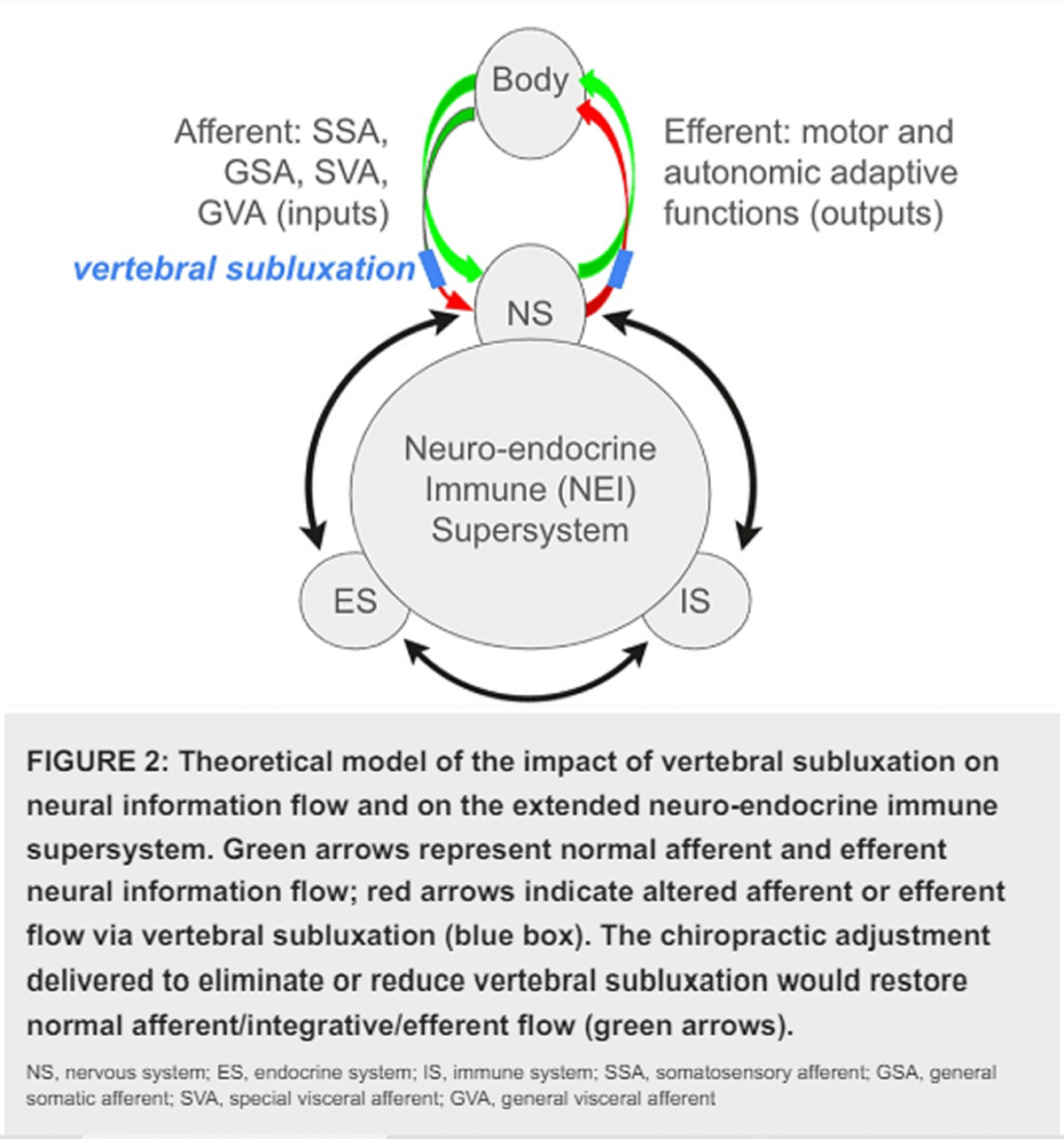Manipulation of Dysfunctional Spinal Joints Affects Sensorimotor Integration in the Prefrontal Cortex: A Brain Source Localization Study
SOURCE: Neural Plast. 2016 (Mar 7); 2016: 3704964 ~ FULL TEXT
Dina Lelic, Imran Khan Niazi, Kelly Holt, Mads Jochumsen, Kim Dremstrup, Paul Yielder, Bernadette Murphy, Asbjørn Mohr Drewes, and Heidi Haavik
Mech-Sense,
Department of Gastroenterology and Hepatology,
Aalborg University Hospital,
9000 Aalborg, Denmark
Objectives. Studies have shown decreases in N30 somatosensory evoked potential (SEP) peak amplitudes following spinal manipulation (SM) of dysfunctional segments in subclinical pain (SCP) populations. This study sought to verify these findings and to investigate underlying brain sources that may be responsible for such changes.
Methods. Nineteen subclinical pain volunteers attended two experimental sessions, SM and control in random order. SEPs from 62-channel EEG cap were recorded following median nerve stimulation (1000 stimuli at 2.3 Hz) before and after either intervention. Peak-to-peak amplitude and latency analysis was completed for different SEPs peak. Dipolar models of underlying brain sources were built by using the brain electrical source analysis. Two-way repeated measures ANOVA was used to assessed differences in N30 amplitudes, dipole locations, and dipole strengths.
Results. SM decreased the N30 amplitude by 16.9 ± 31.3% (P = 0.02), while no differences were seen following the control intervention (P = 0.4). Brain source modeling revealed a 4-source model but only the prefrontal source showed reduced activity by 20.2 ± 12.2% (P = 0.03) following SM.
There are more articles like this @ our:
Conclusion. A single session of spinal manipulation of dysfunctional segments in subclinical pain patients alters somatosensory processing at the cortical level, particularly within the prefrontal cortex.
From the Full-Text Article:
Introduction
Over the past decade, there has been a growing body of evidence to suggest that neural plastic changes occur following chiropractic spinal manipulation. [1] Investigators utilizing techniques such as transcranial magnetic stimulation and somatosensory evoked electroencephalographic (EEG) potentials have suggested that neuroplastic brain changes occur in structures such as the primary sensory cortex, primary motor cortex, prefrontal cortex, basal ganglia, and cerebellum. [2–6] However, the evidence for the involvement of these brain structures is indirect. Although EEG measures neuronal activity directly (with high millisecond time resolution), it has poor spatial resolution, making it difficult to know exactly where in the brain the changes are occurring. Studies with only a few recording EEG electrodes [3, 6] allow investigation of evoked potential amplitudes and latencies and have shown changes in the N30 somatosensory evoked potential (SEP) amplitudes following spinal manipulation, but they do not allow identification of changes in the individual areas of the brain generating the neural activity that underlies the evoked signals.
In recent decades, efforts have been made to improve the spatial resolution of EEG. [7] These methods have successfully been used in a number of SEP studies, generally showing a five-dipole model involving primary and secondary somatosensory cortices, insula, cingulate, and prefrontal cortex. [8–10]
With this study, we set out to utilize brain electrical source analysis to explore which brain sources are responsible for changes in N30 amplitude following a single session of spinal manipulation. We hypothesized that a single session of chiropractic spinal manipulation would reduce the N30 amplitude and that this amplitude reduction would be attributed to decreased strength of one or more of the underlying brain sources.
Read the rest of this Full Text article now!





Leave A Comment